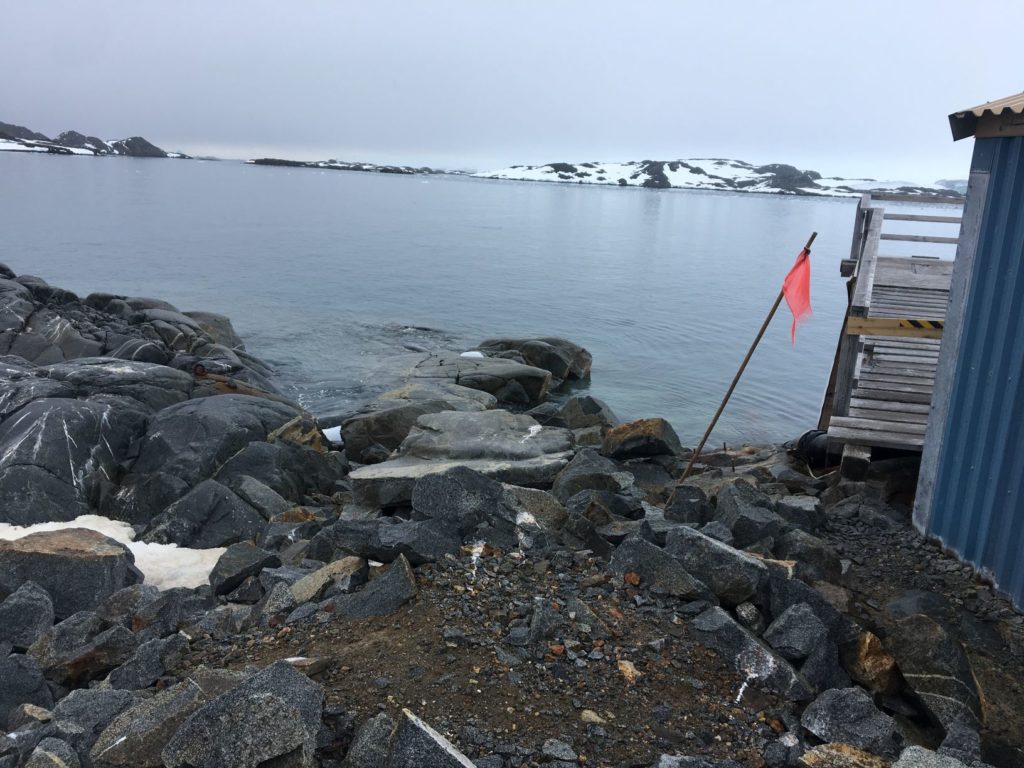Getting ready to roll out

January 4 2019
Note: this is the fifth in a series of posts describing my NSF-sponsored fieldwork in Antarctica about the Laurence M. Gould. Click here for a brief description of the project.
Another note: Before I talk about today’s events, check out the picture above…this is where we did the “Polar Plunge” yesterday.
Today started bright and early with Boating Training. This wasn’t training on how to drive a boat. It was training on how to be a passenger on a small boat (a type of inflatable boat called a “zodiac”). I was rolling my eyes a bit at the idea. I imagined they would tell us things like “sit where you are told to sit,” “don’t move around too much,” and “bring some kind of floatation device.” Nope. It just shows that this is a completely new environment for me and I really needed the training. The environment is really harsh and hypothermia can set in really quickly, especially if you get wet. I learned that the station has cached emergency supplies (tents, sleeping bags, warm clothes, a stove, food, etc) at many nearby sites. They have also marked many common field sites with safe places to tie up a boat. All passengers must pack a dry bag with a full set of warm clothing, from head-to-toe, and the boat carries an extensive and often redundant set of emergency equipment…two fuel tanks, two GPS units, two radios…you get the idea. It reminded me of a line from the movie G.I. Jane: “Two is one, one is none.” The redundancy is completely necessary when your life may be depending on it. It also gave me a lot of confidence in the quality of this program.
After all that, I didn’t have any time for boating today (maybe there will be a chance on the way back). Instead, I calibrated the fluorometer, helped a bit with preparing our nets, dug out a lot of the equipment that we had secured in the cargo area while crossing the Drake Passage, and secured all my buckets and bottles in the aquarium area. While working on calibrating the fluorometer, I had to make a brief visit to the lab on station to use their spectrophotometer. I was impressed by how well-equipped the lab was, and also how helpful the lab manager, Carrie was. She completely dropped what she was doing to show me the instrument, helped me configure the settings, and found all the supplies I needed for the analysis. I laughed a little as a looked around the lab and saw a water bottle with a sticker from Ben Van Mooy’s lab. Ben was on station earlier this year…WHOI scientists really do go everywhere! Overall, it was a busy and tiring day, but I feel ready to head out tomorrow.